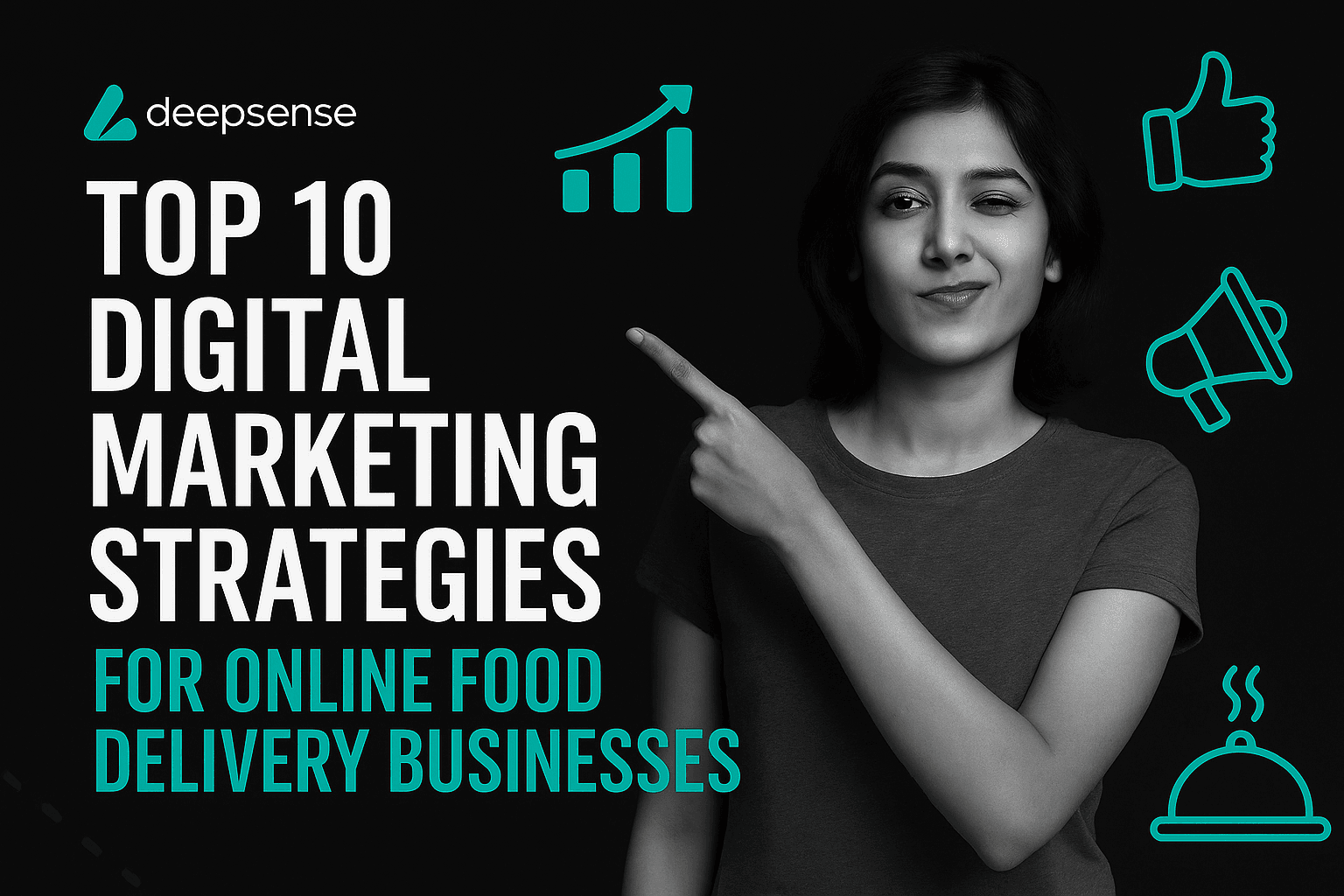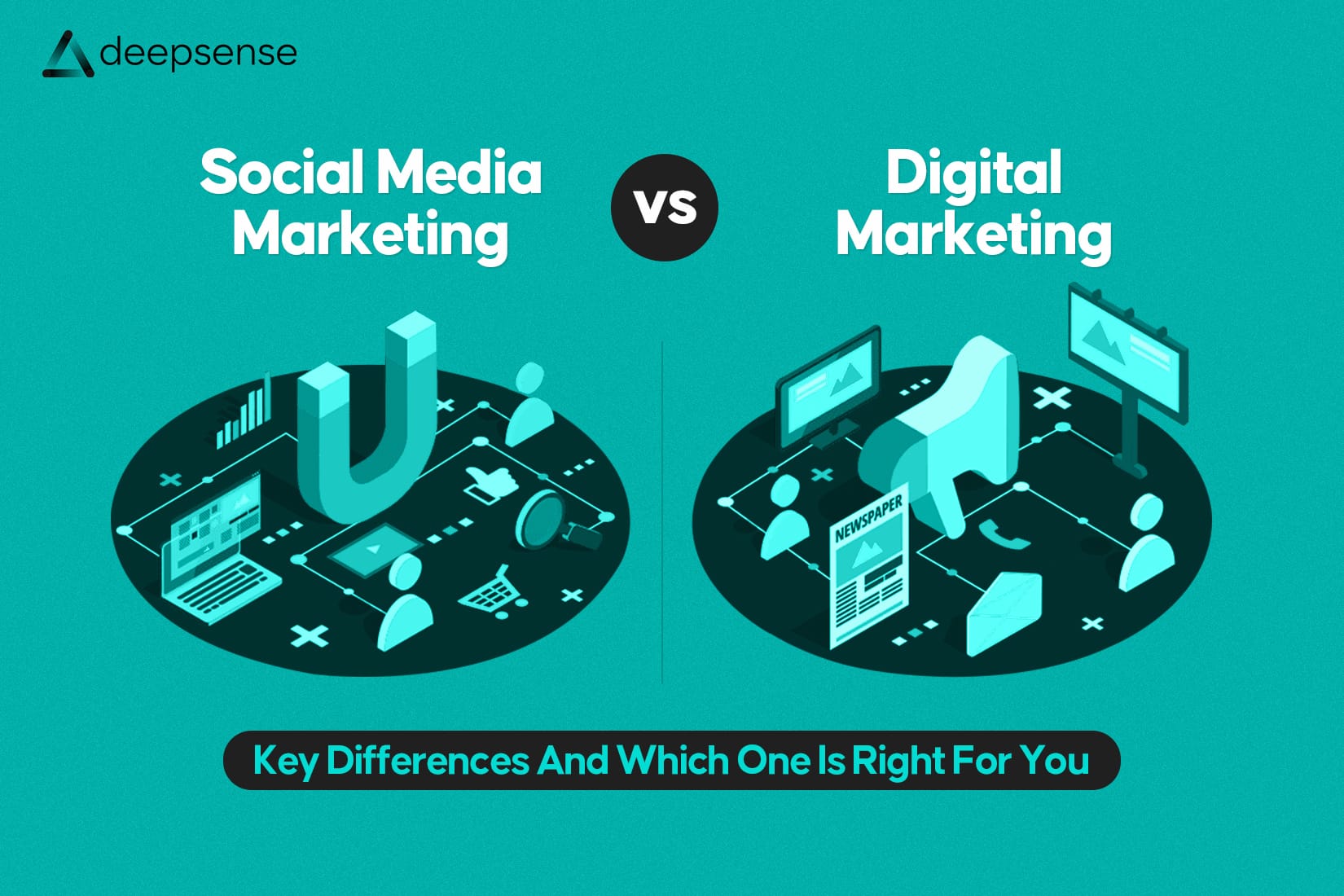Introduction
The food delivery industry has seen unprecedented growth over the past few years. In 2024 alone, the global online food delivery market was valued at over $221 billion, and it is expected to reach $500 billion by 2030. Consumer behavior has shifted, with convenience, speed, and personalization becoming non-negotiable expectations.
But with this surge comes fierce competition. New players enter the market daily, and customers now have an endless buffet of choices right at their fingertips. In this landscape, traditional marketing simply does not cut it anymore. To thrive, online food delivery businesses must embrace digital marketing strategies that are innovative, data-driven, and hyper-targeted.
If you are looking to carve out your space in this booming market or scale your existing operations, mastering the art of digital marketing is non-negotiable. Let’s dive deep into the top 10 digital marketing strategies that can truly set your food delivery business apart.
1. Build a Powerful Mobile-First Website and App
Mobile usage dominates the food delivery sector. According to Statista, over 70% of food delivery orders are placed via mobile devices. A mobile-optimized website is not just a recommendation; it is a necessity. Your platform must load in less than 3 seconds, have intuitive navigation, compelling calls-to-action, and seamless checkout processes.
It is also crucial to integrate smart features like location-based ordering, saved addresses, loyalty program access, push notifications, and personalized menus. Implement progressive web apps (PWAs) if building a full-fledged app is not feasible initially, offering app-like experiences through browsers.
Tip:
Use tools like Google PageSpeed Insights and GTmetrix to optimize your loading speed and performance continuously.
2. Master Local SEO to Dominate Local Searches
Local search is the heartbeat of food delivery businesses. When someone types “best pizza delivery near me” or “late-night food delivery,” you want to be the first name they see.
Focus on optimizing for Google My Business (GMB), acquiring high-quality backlinks, using localized keywords like “24×7 food delivery in [city name],” and maintaining consistent NAP (Name, Address, Phone Number) across all platforms. Build city-specific landing pages that are keyword-optimized and use schema markup to boost your appearance in local search results.
Interesting Fact:
Businesses with optimized Google My Business listings get 7x more clicks than those without.
3. Invest Heavily in Performance Marketing
Running strategic Google Ads, Meta Ads, and YouTube Ads is non-negotiable for any serious food delivery platform. Focus on intent-based campaigns like search ads for “order Chinese food near me” combined with high-intent audience targeting.
Retarget users who visited your website but did not place an order. Use Dynamic Retargeting to show them the exact dishes they browsed. Allocate budgets towards hyperlocal advertising to dominate neighborhoods where demand is highest.
Performance marketing allows you to measure every click, every conversion, and optimize campaigns based on real-time data.
4. Collaborate with Food Bloggers and Micro-Influencers
The power of micro-influencers in the food space is unparalleled. Partner with local food bloggers, Instagram foodies, and YouTube reviewers to create authentic, relatable content that resonates with your target audience.
Sponsored reviews, unboxing of your special meals, behind-the-scenes kitchen tours, and tasting events can generate organic buzz. Influencer marketing brings social proof, which is one of the most potent tools for converting skeptical customers.
Tip:
Choose influencers based not just on follower count but engagement rate and audience demographics.
5. Implement Loyalty Programs and Referral Marketing
Customer acquisition costs can be high. Loyalty programs and referral incentives can significantly improve your customer lifetime value (CLV).
Create a loyalty program where customers earn points for every purchase, which they can redeem for discounts or free meals. Launch referral programs where both the referrer and referee benefit, such as “Refer a friend and both get $10 off your next order.”
A well-designed loyalty program increases repeat orders by 25% to 95% according to Harvard Business Review studies.
6. Use Content Marketing to Build Trust
Content marketing is the subtle but powerful engine that drives long-term growth. Create high-quality blogs, videos, and infographics about food trends, nutrition tips, how-to guides (like “How to choose healthy meals while ordering online”), and kitchen stories about your chefs.
Publishing useful content improves your SEO rankings, builds brand authority, and keeps your audience engaged even when they are not ordering.
Video content, in particular, is king. Bite-sized recipe videos, meal prep showcases, and “What’s New on Our Menu” reels on Instagram and YouTube can massively boost engagement.
Tip:
Use keyword research tools like Ahrefs, SEMrush, or Google Keyword Planner to identify trending food-related search queries in your target location.
7. Harness the Power of Email Marketing Automation
Email remains one of the highest ROI-generating channels for food businesses. Build segmented email lists based on customer behavior like first-time orders, frequency of orders, or cuisine preferences.
Automated emails for abandoned cart reminders, order confirmations, loyalty updates, festive offers, and personalized menu suggestions. Well-crafted, timely emails can nurture users and drive repeat purchases without heavy spending.
Personalization is key. Emails with personalized subject lines see 26% higher open rates.
8. Focus on Advanced CRM and Customer Data Analysis
Modern CRM tools like HubSpot, Zoho CRM, or Salesforce allow you to track every touchpoint in your customer’s journey. Understand what cuisine they prefer, what time they usually order, how frequently they abandon carts, and so on.
Use this data to trigger hyper-personalized offers. For instance, if a user frequently orders Mexican food on Saturday nights, send them a discount coupon for burritos every Friday evening.
Data-driven marketing reduces churn and dramatically increases order frequency.
9. Leverage AI Chatbots and WhatsApp Marketing
Customer support bottlenecks can kill your brand experience. AI-powered chatbots can handle basic queries like order status, payment issues, refund requests, and menu details instantly.
At the same time, WhatsApp marketing has exploded in popularity, especially for direct reordering, sending offers, and new product launches. In fact, businesses using WhatsApp for marketing experience 60% higher open rates compared to email.
Integrating WhatsApp order updates, feedback surveys, and personalized promotional messages can create a more intimate customer experience.
10. Optimize for Voice Search and Emerging Technologies
As voice assistants like Alexa, Siri, and Google Assistant become ubiquitous, optimizing for voice search is the next frontier.
Think in terms of conversational queries. Instead of targeting “pizza delivery Chennai,” optimize for voice-friendly queries like “Where can I get hot pizza delivered in Chennai right now?”
Beyond voice, AR (Augmented Reality) previews of dishes or virtual restaurant tours can set you leagues ahead of the competition. Early adoption of emerging tech can position your brand as a market leader.
Interesting Stat:
By 2025, it is expected that 55% of households will own smart speaker devices, making voice search optimization a major priority for local businesses.
Final Thoughts
Succeeding in the online food delivery business is no longer about having the best cuisine alone. It is a fierce battleground where digital marketing decides winners and losers.
A well-rounded digital strategy, combining mobile-first platforms, local SEO, performance marketing, influencer collaborations, loyalty programs, content marketing, email automation, CRM analysis, conversational commerce, and emerging tech, is what separates market leaders from mere participants.
Every strategy you implement must be agile, customer-centric, and data-driven. Use A/B testing, gather user feedback obsessively, optimize continuously, and be willing to pivot strategies as needed.
Remember, the food delivery business is not just about serving food anymore. It is about serving experiences, and digital marketing is your secret ingredient.
Case Study: How UrbanEats Scaled to 50,000+ Orders a Month with Smart Digital Marketing
Challenges
When UrbanEats entered the online food delivery space in late 2022, they faced a triple threat:
- Market Saturation:
The industry was crowded with established giants like Swiggy, Zomato, and UberEats. Local cloud kitchens were also mushrooming rapidly.
- Brand Visibility:
With limited brand recognition and no large marketing budgets, getting noticed in crowded feeds and search results was a serious challenge.
- Customer Loyalty:
The average food delivery user was highly fickle, hopping between apps based on discounts rather than loyalty.
- Operational Bottlenecks:
Slow mobile site load times, a clunky checkout experience, and limited customer service infrastructure were costing them potential orders even before marketing efforts kicked in.
In short, UrbanEats needed a way to attract, convert, and retain customers while fighting larger competitors who were already household names.
Solution
UrbanEats knew they could not win by simply copying bigger players. Instead, they designed a sharp, hyper-focused digital marketing strategy that focused on three pillars: Hyperlocal reach, Personalization, and Speed.
Here’s the breakdown of what they implemented:
1. Mobile-First Ordering
UrbanEats built a Progressive Web App (PWA) for lightning-fast, frictionless ordering. They reduced the checkout process to just three taps, focusing entirely on mobile-first behavior.
2. Hyperlocal SEO Domination
They targeted long-tail location-based keywords like “best midnight food in Andheri” and aggressively optimized their Google My Business profiles for each delivery zone.
3. Laser-Focused Ads
Instead of mass campaigns, they ran Google Ads and Meta Ads within 5 km radius of each kitchen, timing them to run during peak hunger hours.
4. Influencer Collaborations
Rather than spending heavily on celebrity endorsements, they collaborated with local food micro-influencers to create authentic buzz around new launches and signature dishes.
5. Loyalty and Referral Engine
They launched the UrbanRewards Program, gamifying customer loyalty through points, badges, and exclusive offers, and layered a referral system to encourage organic user acquisition.
6. Personalized Email and WhatsApp Automation
Using detailed customer segmentation, they created personalized reactivation offers, special birthday discounts, and tailored recommendations based on past orders.
7. AI Chatbot for Instant Customer Service
They deployed a smart AI chatbot to instantly answer common queries like delivery status, refund policies, and menu updates without manual intervention.
8. Data-Driven Optimization
From click-through rates to churn analytics, they aggressively A/B tested every creative, notification, and landing page to continually refine performance.
Results
Within just 12 months of rolling out this strategy, UrbanEats achieved stunning growth:
- 50,000+ Monthly Orders:
They scaled from zero to 50,000+ orders per month, primarily driven by hyperlocal visibility and loyalty-driven traffic.
- 2 Lakh+ App Downloads:
Their lightweight, mobile-first app and PWA helped them cross 2 lakh downloads with a 4.7-star average rating.
- 62% Organic and Loyalty-Based Orders:
Over 60% of their orders were driven organically through SEO, loyalty programs, referrals, and email/WhatsApp reactivations rather than paid ads.
- 6.2x Return on Ad Spend (ROAS):
Their hyperlocal ad strategy helped them achieve a ROAS of 6.2x, significantly higher than the industry average.
- 18% Reduction in Customer Churn:
Personalized communication and loyalty incentives cut churn by nearly one-fifth.
- 300% Increase in Organic Search Traffic:
Local SEO and fresh GMB updates led to a massive spike in discovery and new customer acquisition through “near me” searches.
- 74% Customer Queries Resolved by AI Bot:
Automation helped UrbanEats streamline customer service, improve satisfaction rates, and free up human support teams for complex issues.
- 750K+ Organic Views on Food Content:
Their snackable reels, BTS stories, and recipe shorts generated viral attention without relying heavily on paid media.
Final Thoughts
UrbanEats shows that you do not need deep pockets to win in the food delivery industry, you need deep customer insights, smart digital plays, and an obsession with local-first personalization.
The brands that understand where their customers are, what they crave, and how they behave, and can move faster than their competitors, are the ones that survive and thrive.
UrbanEats didn’t just deliver food. They delivered experience, emotion, and trust; all on a plate, just a few taps away.
FAQs
1. How can I promote my food delivery service?
You can promote your food delivery service by using social media ads, partnering with food influencers, offering first-order discounts, running local SEO campaigns, creating loyalty programs, getting listed on major food apps, and using email marketing to stay connected with customers. High-quality food photography and customer reviews also boost visibility.
2. What are the 7 pieces of digital marketing?
The 7 key pieces of digital marketing are:
- SEO (Search Engine Optimization)
- Content Marketing
- Social Media Marketing
- Email Marketing
- Paid Advertising (PPC)
- Affiliate Marketing
- Analytics and Data-driven Strategies
Together, they help build brand awareness, drive traffic, and convert leads into customers.
3. What digital marketing strategy does Amazon use?
Amazon uses a mix of personalized marketing, data-driven advertising, SEO, paid search (sponsored products), email marketing, and retargeting. It focuses heavily on customer behavior analytics and AI recommendations to deliver hyper-personalized shopping experiences and maintain customer loyalty.
4. Which strategy is best for digital marketing?
The best digital marketing strategy combines SEO, content marketing, social media engagement, paid advertising, and email marketing, all backed by strong analytics. A multi-channel, data-driven approach ensures you can reach your audience at different touchpoints and optimize campaigns for the best ROI.
5. What is the best option for food delivery?
The best options depend on your market, but apps like Swiggy, Zomato, Uber Eats, and DoorDash dominate most regions. For your own service, having a dedicated, easy-to-use mobile app or website with quick checkout, reliable delivery tracking, and good customer support is essential.
6. How do I promote my food business?
Promote your food business by building a strong presence on Instagram and Facebook with mouthwatering visuals, collaborating with food bloggers, offering exclusive deals, leveraging Google My Business for local SEO, running targeted ads, hosting food events, and encouraging customer reviews and referrals.











